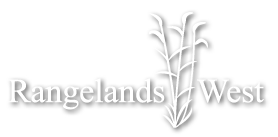Stocking Rate & Carrying Capacity
The number of animals, per area, for a certain period of time is known as stocking rate.
Stocking rate is the most critical decision managers can make to manage well for plant community health and livestock weight gain, and protect rangeland health in drought1.
New satellite tools allow us to estimate this in a handy app!
What is the Rangeland Carrying Capacity App?
Our new rangeland carrying capacity app allows you to answer:
- How many livestock does my land support for how long?
- How does forage production change in drought, and how does that translate into reduced grazing days, AUMs, or carrying capacity?
The app draws on Web Soil Survey or Rangelands Analysis Platform data (selected by the user) to estimate production. It also allows you input your own estimates if you have data for your pasture or rangeland.
Using the Rangeland Carrying Capacity App
- You can make and save pastures for use in the app using Google maps.
- You can also draw them directly inside the app.
- If you have difficulty creating maps or using the app, contact retta.bruegger@colostate.edu
Video Tutorial on the Range Carrying Capacity App
Stocking rate, grass growth and utilization
Demand Cannot Exceed Supply
- Regardless of grazing strategy (rotation, continuous, etc.), demand for forage by grazing animals cannot exceed supply.
- Supply can be challenging to calculate in Colorado because it changes year to year. There isn’t just one number on rangelands in Colorado that will be appropriate to use every year.
- The Carrying Capacity App allows you to select for different scenarios for forage production.
Harvest Efficiency Rate vs. Utilization
“The grass doesn’t know what bit it.”
In calculating available forage for intake by livestock, managers plan on using only 25%-30% of the total forage to protect land health and grass vigor.

- Grass recovery and resilience declines drastically beyond 50% use by weight (i.e., forage removal2).
- Utilization: The proportion of current year’s forage production that is consumed or destroyed by grazing animals2.
- Harvest Efficiency: The percentage of forage actually ingested by the animals from the total forage produced3.
- With 25% ingestion by livestock, managers plan that 50% will be removed from the plant because some will be lost to trampling, deification, and wildlife use.
- Planning to ‘consume’ more would reduce in overuse, which subsequently reduces the amount of regrowth by plants.
- Leaving forage behind can help protect the land from erosion and ensure that it is productive in the future.
Other Tools & Calculators
Estimate Stocking Rate, Expenses, and Total Return
Use the the calculator, Matching Cow Size to Available Forage, by CSU Agriculture and Business Management Economists, Jesse Russel, Jeffrey E. Tranel, R. Brent Young and Norman Dalsted, to integrate stocking rate with economic information.
References
- Briske, D. D. (2011). Conservation benefits of rangeland practices: assessment, recommendations, and knowledge gaps. Available at: https://nrcspad.sc.egov.usda.gov/DistributionCenter/product.aspx?ProductID=877
- Crider, F. J. (1955). Root-growth stoppage resulting from defoliation of grass (No. 1102). US Department of Agriculture.
- Technical Note Range No. 73
Search:
Categories
- No categories





